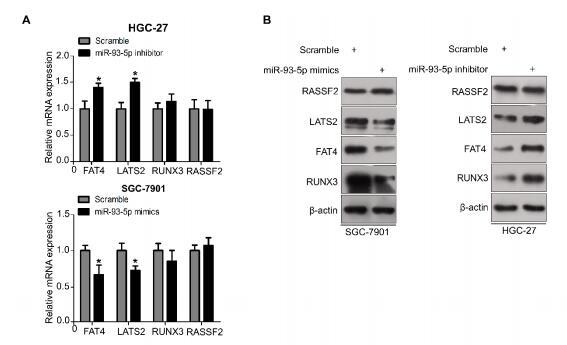RASSF2 Antibody - #DF8437
| Product: | RASSF2 Antibody |
| Catalog: | DF8437 |
| Description: | Rabbit polyclonal antibody to RASSF2 |
| Application: | WB IHC IF/ICC |
| Reactivity: | Human, Mouse, Rat |
| Prediction: | Pig, Horse, Sheep, Rabbit, Dog, Xenopus |
| Mol.Wt.: | 37 kDa; 38kD(Calculated). |
| Uniprot: | P50749 |
| RRID: | AB_2841683 |
Product Info
*The optimal dilutions should be determined by the end user.
*Tips:
WB: For western blot detection of denatured protein samples. IHC: For immunohistochemical detection of paraffin sections (IHC-p) or frozen sections (IHC-f) of tissue samples. IF/ICC: For immunofluorescence detection of cell samples. ELISA(peptide): For ELISA detection of antigenic peptide.
Cite Format: Affinity Biosciences Cat# DF8437, RRID:AB_2841683.
Fold/Unfold
CENP 34; Centromere protein 34; Ras association (RalGDS/AF 6) domain family 2; Ras association (RalGDS/AF-6) domain family member 2; Ras association domain containing protein 2; Ras association domain-containing protein 2; RASF2_HUMAN; RASFADIN; RASSF2; RP4-599I11.1;
Immunogens
Widely expressed with highest levels in brain, placenta, peripheral blood and lung. Frequently down-regulated in lung tumor cell lines.
- P50749 RASF2_HUMAN:
- Protein BLAST With
- NCBI/
- ExPASy/
- Uniprot
MDYSHQTSLVPCGQDKYISKNELLLHLKTYNLYYEGQNLQLRHREEEDEFIVEGLLNISWGLRRPIRLQMQDDNERIRPPPSSSSWHSGCNLGAQGTTLKPLTVPKVQISEVDAPPEGDQMPSSTDSRGLKPLQEDTPQLMRTRSDVGVRRRGNVRTPSDQRRIRRHRFSINGHFYNHKTSVFTPAYGSVTNVRINSTMTTPQVLKLLLNKFKIENSAEEFALYVVHTSGEKQKLKATDYPLIARILQGPCEQISKVFLMEKDQVEEVTYDVAQYIKFEMPVLKSFIQKLQEEEDREVKKLMRKYTVLRLMIRQRLEEIAETPATI
Predictions
Score>80(red) has high confidence and is suggested to be used for WB detection. *The prediction model is mainly based on the alignment of immunogen sequences, the results are for reference only, not as the basis of quality assurance.
High(score>80) Medium(80>score>50) Low(score<50) No confidence
PTMs - P50749 As Substrate
| Site | PTM Type | Enzyme | Source |
|---|---|---|---|
| S8 | Phosphorylation | Uniprot | |
| K20 | Ubiquitination | Uniprot | |
| K100 | Ubiquitination | Uniprot | |
| T137 | Phosphorylation | Uniprot | |
| R142 | Methylation | Uniprot | |
| T143 | Phosphorylation | Uniprot | |
| R144 | Methylation | Uniprot | |
| S145 | Phosphorylation | Uniprot | |
| R151 | Methylation | Uniprot | |
| R165 | Methylation | Uniprot | |
| S170 | Phosphorylation | Uniprot | |
| K206 | Ubiquitination | Uniprot | |
| K211 | Ubiquitination | Uniprot | |
| Y224 | Phosphorylation | Uniprot | |
| Y270 | Phosphorylation | Uniprot | |
| K289 | Ubiquitination | Uniprot | |
| Y305 | Phosphorylation | Uniprot | |
| T306 | Phosphorylation | Uniprot | |
| T325 | Phosphorylation | Uniprot |
Research Backgrounds
Potential tumor suppressor. Acts as a KRAS-specific effector protein. May promote apoptosis and cell cycle arrest. Stabilizes STK3/MST2 by protecting it from proteasomal degradation.
Phosphorylated by STK3/MST2 and STK4/MST1.
Nucleus. Cytoplasm. Chromosome>Centromere>Kinetochore.
Note: Translocates to the cytoplasm in the presence of STK3/MST2 AND STK4/MST1.
Widely expressed with highest levels in brain, placenta, peripheral blood and lung. Frequently down-regulated in lung tumor cell lines.
Interacts directly with activated KRAS in a GTP-dependent manner. Interacts (via SARAH domain) with STK3/MST2 AND STK4/MST1.
Research Fields
· Environmental Information Processing > Signal transduction > Hippo signaling pathway - multiple species. (View pathway)
References
Application: WB Species: human Sample:
Restrictive clause
Affinity Biosciences tests all products strictly. Citations are provided as a resource for additional applications that have not been validated by Affinity Biosciences. Please choose the appropriate format for each application and consult Materials and Methods sections for additional details about the use of any product in these publications.
For Research Use Only.
Not for use in diagnostic or therapeutic procedures. Not for resale. Not for distribution without written consent. Affinity Biosciences will not be held responsible for patent infringement or other violations that may occur with the use of our products. Affinity Biosciences, Affinity Biosciences Logo and all other trademarks are the property of Affinity Biosciences LTD.

